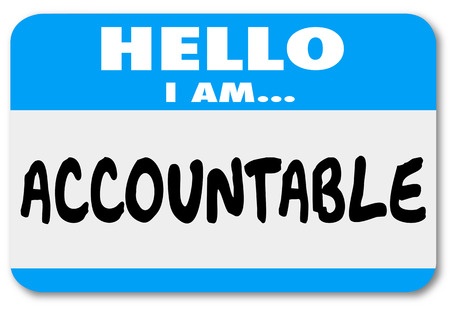3 min read
Personal Leadership Development Plan: Helping Teams Under Stress
IS YOUR TEAM UNDER STRESS?
The following is another lesson from my coaching play book about a leader whose team was...
By: Diane Ring on May 31, 2021

There is a topic that resurfaces over and over again with leaders I coach that deserves a few basic reminders. The topic is how to foster a culture of accountability.
Even the most effective leaders find themselves very uncomfortable when they have to confront an employee about their underperformance. That's why accountability and leadership go hand-in-hand. Knowing you have to tell someone they are not meeting your expectations can be a very daunting message to deliver, for many reasons. It stirs up past memories when we were criticized or given feedback in a negative way. For some leaders, accountability conversations activate a conflict aversion personality pattern because we know it can be very difficult to hear that we are not doing a good job. We are often to the point of anger or frustration when things have gone poorly for a while and it’s tough to hold that in and be diplomatic with the delivery.
So here are 3 uncomfortable ways that will make you more successful at holding employees accountable.
One CEO recently shared with me that she was facing the need to have a conversation with an employee who has chronically missed deadlines, and was dreading the discussion so much that she put it off to the point that now she now had a series of missed deadlines to address with this employee. The longer she put it off, the bigger the problem was becoming, the more frustrated she was getting, and the more uncomfortable she was feeling about having the accountability discussion.
A great way to start to deal with this discomfort is to acknowledge your inner resistance to holding people accountable which is causing the delay in dealing with the problem. It takes courage to own your own emotional needs. Underneath the surface your brain may be processing some pretty intense emotions this situation activates such as concerns about your own loss of control over a situation, a fear of losing connection with someone you care about, or fear of feeling like a failure at being an effective leader.
Rather than side step these emotions, take a look at them. Resistance or tension around taking action is the brain’s way of helping inform of us an emotional need we have. The more we can get in touch with that need, the more we can examine the rational basis for it, and do something to help satisfy this need.
As in the case with this CEO, confronting a high achiever who has missed deadlines activates her inner story about her own fear of failure as a leader and instills fear of an accountability conversation sending a message to an employee she values that they have failed. Knowing herself and the emotional personality patterns she has can be a big step toward not being constrained by the limiting beliefs associated with these stories she tells herself.
Sidenote: I use the Enneagram personality system to help leaders identify their inner motivations, emotional needs and stories they tell themselves about their approach to accountability. It is a fantastic accelerator of self awareness.
Once we identify our emotional needs, the next step is to examine the meaning of the stories we are telling ourselves that are causing tension and reticence to act. Some examples this CEO could use to expand her perspective include:
After reflecting on this series of questions, there is likely a new option will emerge or start to "feel right," that will shape the way you approach taking action.
Even after doing all of this inner work, you may still feel uncomfortable about giving constructive feedback. However, after reflecting on what is causing you stress about having the discussion, then facing your own inner stories and emotional needs, you will be ready to have a coherent discussion with this employee about what is going on with missing deadlines and find a way to solve this. Some benefits to doing your own inner work are:
There are many models for giving feedback and I will cover those in future blogs, but the first order of business is to get your own emotions in check to foster a culture of accountability.
What do you do to acknowledge accountability in the workplace? Tell us below!
Nov 4, 2021by Diane Ring
IS YOUR TEAM UNDER STRESS?
The following is another lesson from my coaching play book about a leader whose team was...
Nov 3, 2021by Diane Ring
There is nothing like a sudden change of executive leadership to trigger all kinds of personality dynamics in a team....
Nov 2, 2021by Diane Ring
More than 70% of executives are not effective at supporting new-to-role peers and managers according the Corporate...